Ontario isn't just fighting one COVID-19 pandemic -- it's many 'micro-pandemics' and 'micro epidemics', health officials reveal
For more on today’s top stories and the spread of the novel coronavirus across the country, please refer to our live updates below throughout the day, as well as our COVID-19 news hub.

Ontario’s top health professionals say the province is in a “precarious” position where there is some “flattening” of the epidemic curve in certain areas, but situations differ greatly across Ontario.
“Some communities face a much higher burden from the Pandemic because of long-standing structural factors that lead to higher exposure to COVID-19,” the latest projections from Ontario’s COVID-19 science advisory table reads. “One-size-fits-all public health interventions are unlikely to have the same impact in some communities.”
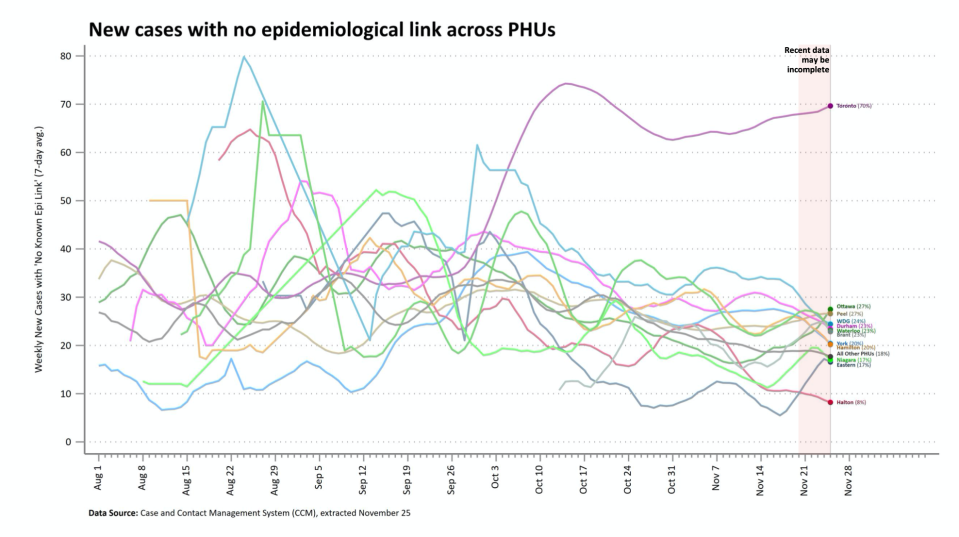
Toronto is seeing significantly more cases that are not epidemiologically linked, while the Peel region is seeing the most cases per 100,000, compared to other Ontario public health units, and the highest percent positivity in testing, exceeding 10 per cent.
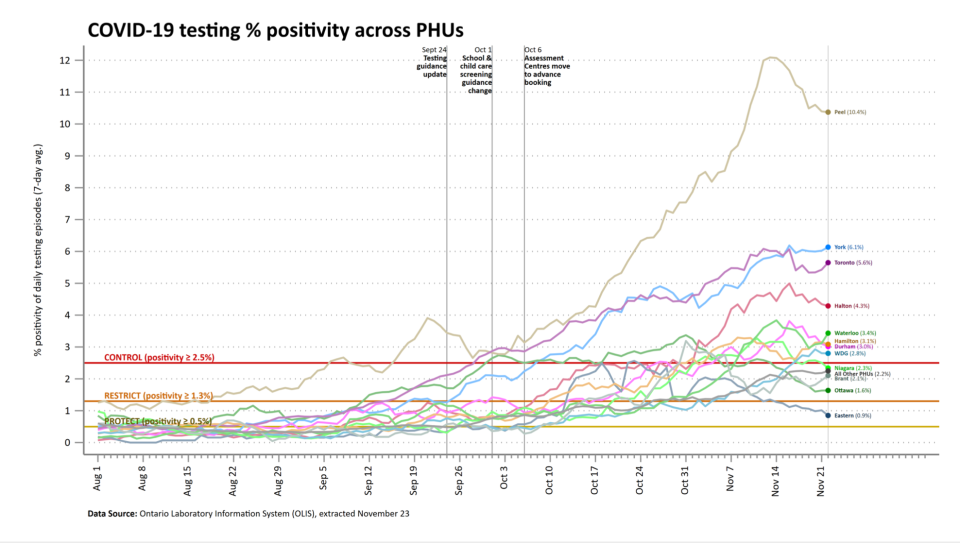
“This is not a single pandemic across the province but really a series of micro-pandemics or micro-epidemics that require a different approach in different regions,” Dr. Adalsteinn Brown, co-chair of the Ontario COVID-19 science advisory table said.
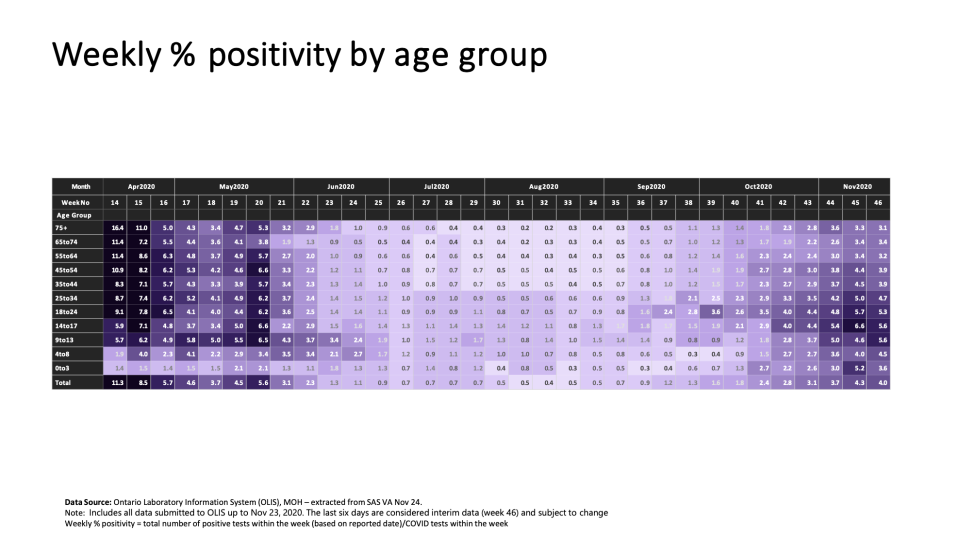
Dr. Brown identified that it’s a “positive” sign that percent positivity is generally going down across all age groups. He added that the province is at a “fragile moment.”
“If we’re able to continue to decrease case numbers you’ll see improvement in the pandemic but a small number of outbreaks could dramatically increase case numbers, and take us back up on to what looks more like a worst-case trajectory,” he said.
Dr. Dirk Huyer, coordinator of the provincial outbreak response, reported a “concerning” high number of new outbreaks on Thursday, totalling 48 in Ontario. Over seven days, as of Wednesday, Ontario reported 212 outbreaks and 748 over the past 30 days.
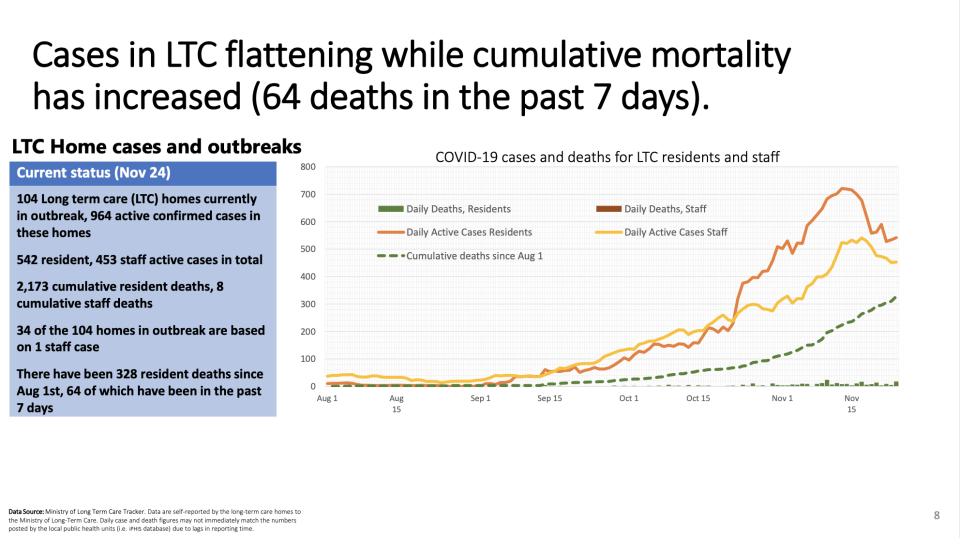
Although COVID-19 deaths in long-term care increased by 64 in the past seven day, it’s lower than the projections in previous updates.
“The cases have peaked, it looks like, and [are] starting to come down,” Dr. Brown said. “That’s positive indicator.”
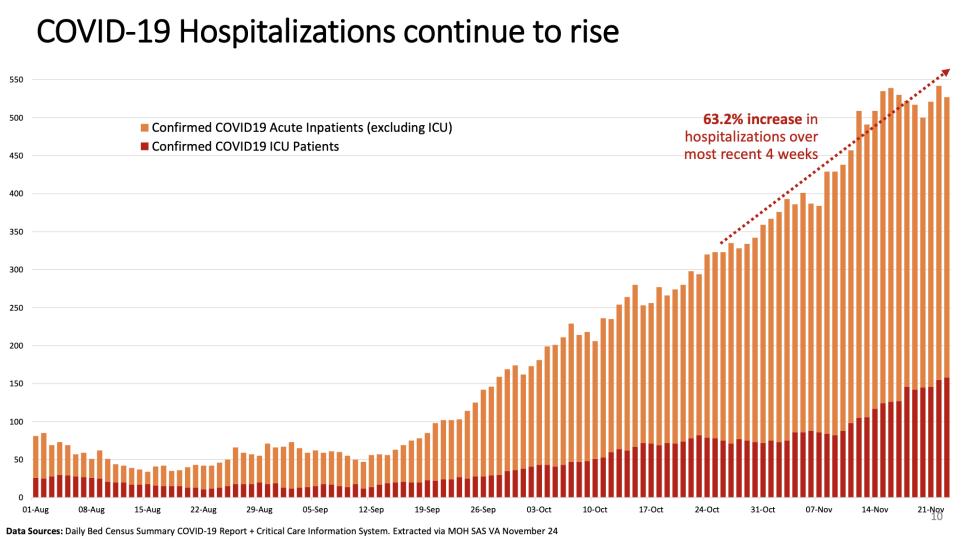
He stressed that indicators like deaths lag behind for a few weeks, if not longer, and hospitalizations are further behind as well.
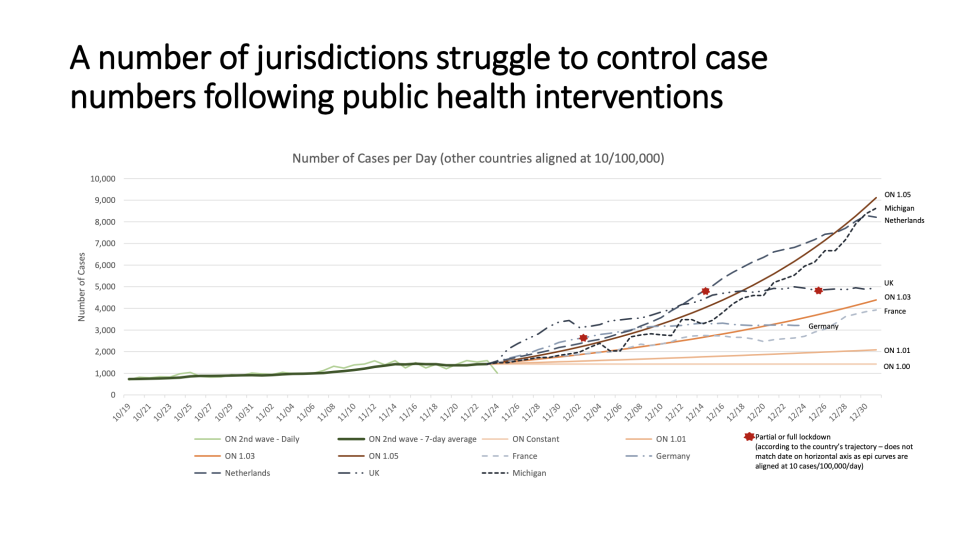
Ontario’s growth rate of COVID-19 case in between zero and one per cent.
“If we continue on the current level of cases, if there was no further growth in the rate of new cases, we’ll sort of flatline there and that might be considered a conservative version of a best case scenario right now,” Dr. Brown said. “We’re not modelling a decrease in cases right now, it’s a little too early to say in this fragile position whether cases will come down, although they are flat right now.”
“With a sufficient number of outbreaks, you could see much higher rates of growth.”
He went on to say that if Ontario maintains the the current level of growth in COVID-19 cases, the province will “likely” see the same number of daily cases by the end of December. Dr. Brown said if the growth increases, Ontario could see more than 9,000 cases.
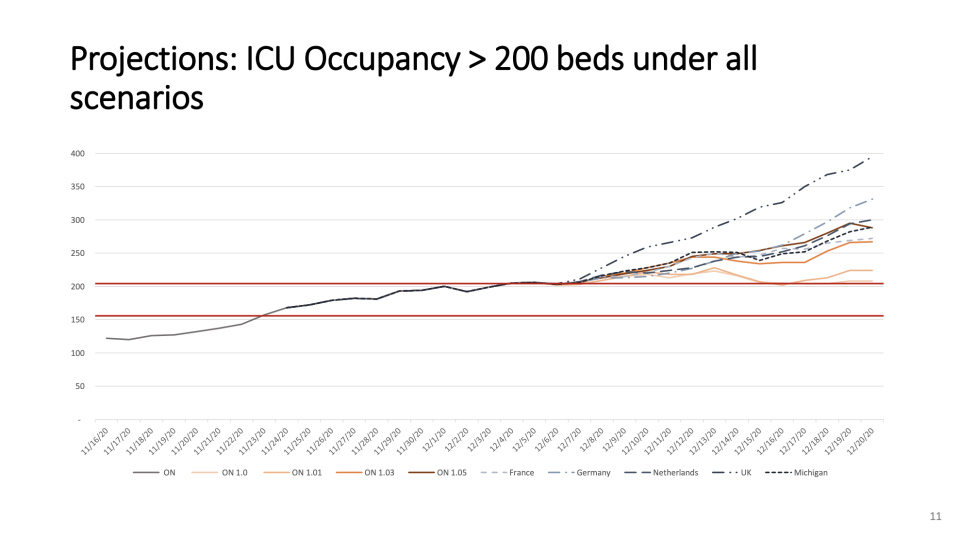
Dr. Brown indicated that it is “very likely” that there will be further increases in ICU occupancy in any scenario.

“Under the flatline scenario, which is maybe a conservative definition of a best case scenario right now, occupancy does stay above 200 beds for a fair period of time and at that level, hospitals are facing significant capacity challenges,” he said.

In both the first and second wave of the COVID-19 pandemic, household density and neighbourhoods with more essential service workers saw higher case numbers, this includes people who are not able to work form home and individuals who are not able to properly isolate.
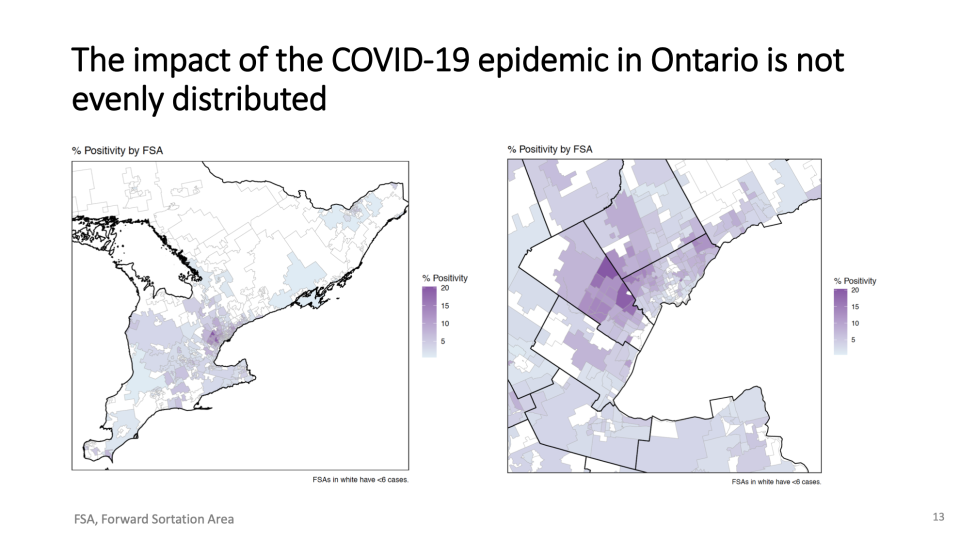
There are even significant differences within the same public health unit. When the same interventions are applied, they create very different reductions in COVID-19 exposures.
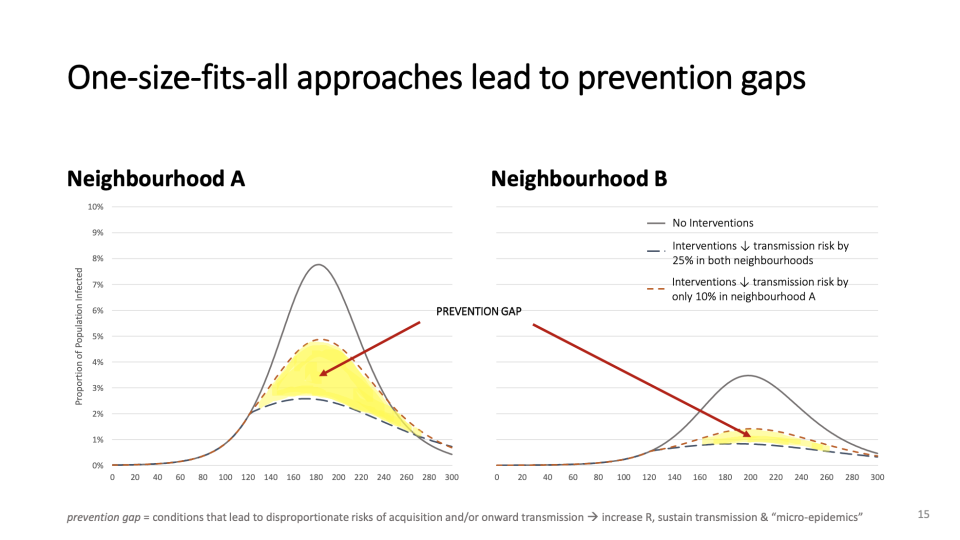
“If we take a ‘one size fits all’ approach with efforts to reduce infection, you’ll see this prevention gap open up in these communities with long standing structural factors,” Dr. Brown said. “Infections will remain higher and actually that will, in the long run, make infections across the province higher as well.”
Dr. David Williams, Ontario’s chief medical officer of health, indicated that no other regions of the province will be moved into lockdown restrictions at this time but some health units will shift into different levels of Ontario’s framework, with an announcement coming Friday.
He added that it is too early to make any adjustment to the current restrictions in place in regions under lockdown.
“We can’t seen the full impact,” Dr. Williams said. “The encouraging part is that we’re seeing these things potentially turning and no one more than I would like to see it even moving more aggressively down.”
Check out our COVID-19 in Canada topic page for latest news, tips, health updates, cases and more.

 Yahoo Finance
Yahoo Finance 